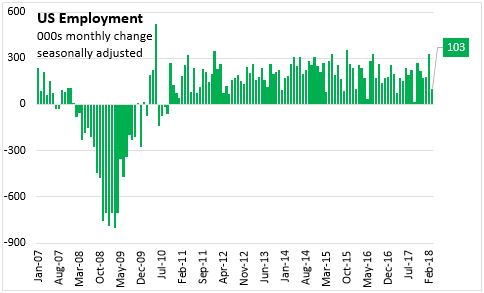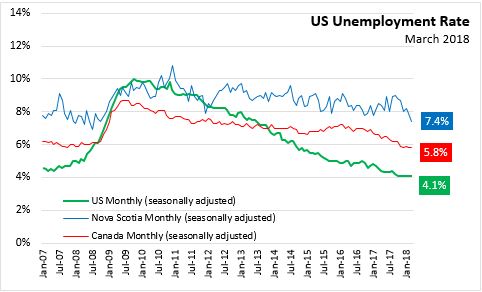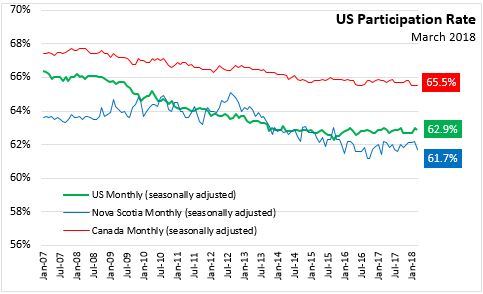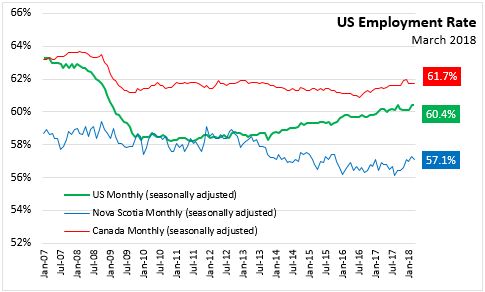The Economics and Statistics Division maintains archives of previous publications for accountability purposes, but makes no updates to keep these documents current with the latest data revisions from Statistics Canada. As a result, information in older documents may not be accurate. Please exercise caution when referring to older documents. For the latest information and historical data, please contact the individual listed to the right.
<--- Return to Archive
For additional information relating to this article, please contact:
April 06, 2018US EMPLOYMENT, MARCH 2018 The US Bureau of Labor Statistics reports today that US non-farm payroll employment increased by 103,000 in March, following a revised gain of 326,000 jobs in February. Employment in January and February has been revised down, leading to the combined employment gains in those months to be 50,000 less than previously reported. After revisions, employment gains have averaged 202,000 in the last three months.
In March, employment gains were seen mainly in manufacturing (+22,000), health care (+22,000), mining (+9,000), professional and business services (+33,000). Employment in other major industries changed little month over month, including retail trade, construction, wholesale trade, transportation and warehousing, information, financial activities, leisure and hospitality, and government.

The US unemployment rate held steady at 4.1 per cent for the sixth consecutive month - persisting below pre-recession levels since peaking at an annual average of 9.6 per cent in 2010.
Canada's unemployment rate has also been falling below pre-recession levels. Canada's unemployment rate was unchanged at 5.8 per cent in March, while Nova Scotia's declined to 7.4 per cent.

The participation rate was little changed at 62.9 per cent in March as the labour force declined by 158,000. Unlike unemployment rates, the US participation rate has failed to return to pre-recession levels and has only increased modestly since bottoming out in 2015.
Participation rates in Canada and Nova Scotia also declined in the years after the global financial crises, although Nova Scotia's has been trending upward in recent months.

The US employment to population ratio remained unchanged in March at 60.4 per cent.
Employment rates in Canada have been trending up since mid-2016, but are still below levels observed in 2008. With an aging population and declining labour supply, Nova Scotia's employment rates have trended down since 2012, there has been some recovery in recent months.

Note: Canadian and US labour force statistics refer to different working-age cohorts.
Source: US Bureau of Labor Statistics, Statistics Canada CANSIM table 282-0087
<--- Return to Archive